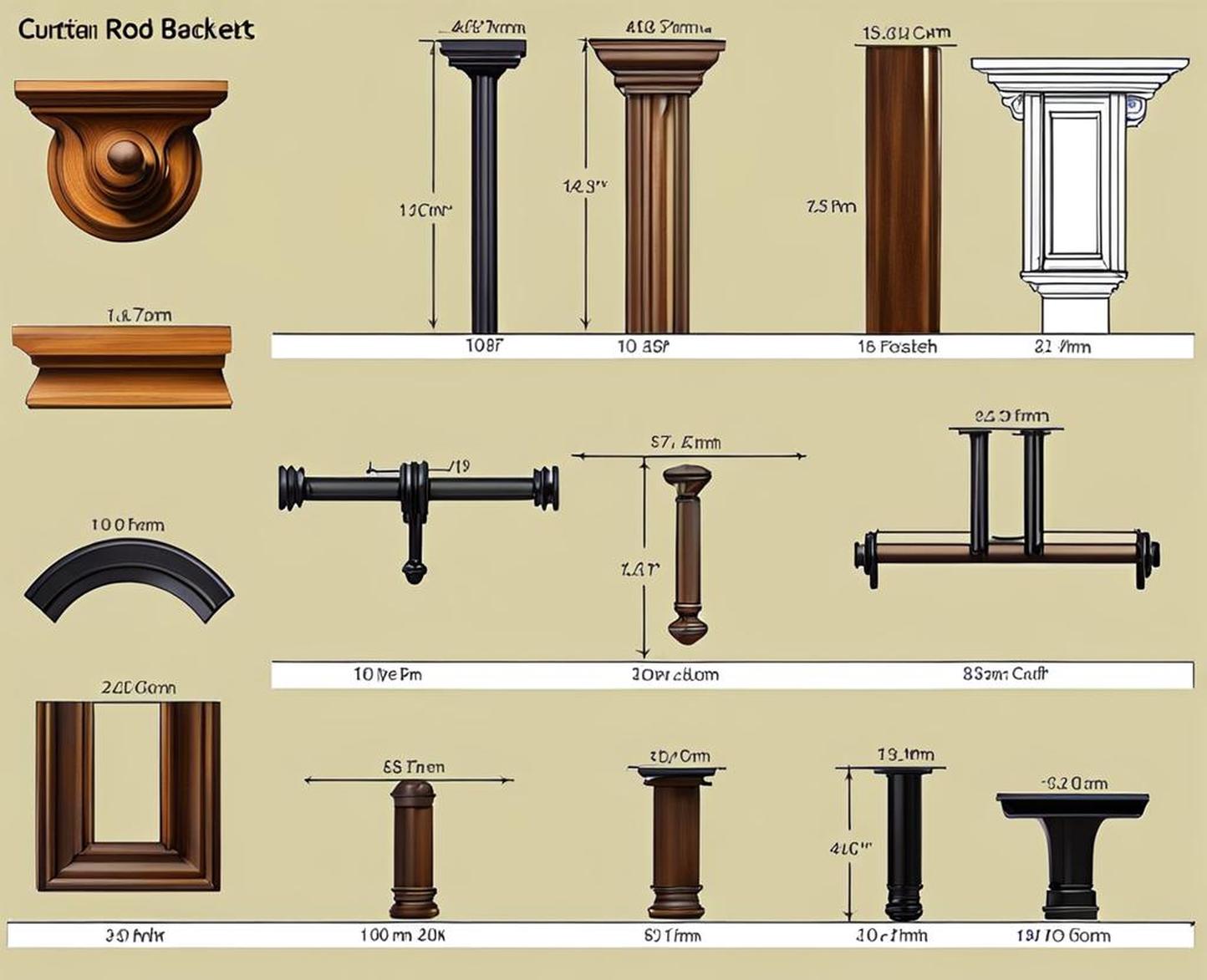Installing curtains can instantly transform the look and feel of a room. But achieving that perfect drape requires having the right curtain rod brackets in place. Curtain rod brackets act as the foundation, enabling you to mount rods to walls or ceilings while supporting the weight of your beautiful drapes.
When selecting brackets, it’s important to evaluate factors like your curtain rod type and size, mounting location, functional needs, and decor style. The right brackets allow you to not only mount rods properly, but also customize elements like returns and clearance to control light and privacy.
An Introduction to Curtain Rod Brackets
Before diving into the various bracket types and how to select the best option, let’s quickly cover some curtain rod bracket basics:
- They provide attachment points to mount rods to walls or ceilings
- They support the weight of curtains and rods
- They come in a range of styles and finishes
- Some offer adjustable returns and clearance
Factors like your curtain rod material (wood, metal, etc.) and whether you want a fixed or adjustable design impact which bracket types could work well. Your mounting location also plays a role – do you need wall-attached brackets or ceiling-mounted? Finally, consider functional factors like returns and weight capacity along with visual coordination.
Elements to Factor When Choosing Brackets
Assess these elements before selecting curtain rod brackets:
- Type of rod
- Mounting location
- Desired return size
- Adequate clearance
- Weight of rod + curtains
- Design style and aesthetics
This information will guide you to suitable bracket types and help achieve your perfect drape!

Understanding Key Curtain Rod Bracket Categories
While there are many varieties, most brackets fall into a few main categories:
Wooden Brackets
As the name implies, these brackets are constructed from wood. They feature a sleek yet substantial profile that adds natural warmth.
Wooden brackets coordinate beautifully with wooden curtain rods. They usually offer return size options ranging from 2 inches to 8 inches. This allows you to control light gaps and privacy levels.
You’ll find wooden brackets available in both fixed and adjustable versions. Adjustable wooden brackets provide more flexibility for finessing drape placement and folds after initial rod mounting. But fixed wooden brackets offer a more seamless, built-in look.
Metal Brackets
Offering clean lines and a modern, lightweight look, metal brackets take many forms to suit varied decor needs. Common metal bracket varieties include:
- Steel
- Iron
- Aluminum
- Brushed nickel
- Oil-rubbed bronze
- Polished chrome
- Matte black
Metal brackets are available in standard as well as more decorative, ornamental profiles. They can be mounted to both walls and ceilings. Many provide flexible return and clearance options, allowing adjustments after initial installation.
Specialty Brackets
If you have a unique curtain rod situation, specialty brackets provide solutions. Examples include:
Wrought Iron Brackets
Featuring solid durability, these brackets are specifically made for large, heavy duty wrought iron curtain rods. They allow for mounting two layered rods in front of each other. This enables you to hang double curtain panels or combine sheers and blackouts.
Inside Mount Sockets
Eliminating visible wall attachments, these compact sockets allow mounting rods directly wall-to-wall inside a window frame. This offers a streamlined look and works well for narrow windows.
Bypass Brackets
Featuring specialized rings, these brackets let your curtains easily side pass each other. Curtain rings or loops simply slide over the rings so adjoining curtains can open and close without colliding.
Double Brackets
Double brackets allow mounting two separate curtain rods using just one bracket. This provides layered rod versatility while saving space compared to using two individual brackets.
How to Select the Right Brackets
When tackling a curtain project, shop for complementary brackets and rods together. This guarantees properly synced aesthetics and functional coordination between the hardware pieces. Follow these steps for choosing brackets tailored to your needs:
1. Measure Your Window
Carefully gauge the width to determine required rod length. Account for stack back so curtains don’t bunch and overlap when fully open. Measure window height as well – this impacts clearance needs.
2. Determine Mounting Location
Decide whether you’ll attach brackets to the wall above or ceiling. Wall mounting typically offers easier access for hanging curtains while ceiling mounting can provide more height. You can also utilize sconces or frames extending from windows.
3. Settle on Design Style
Do you prefer an ornate Victorian look with antique brass? Or sleek contemporary styling in matte black? Your chosen decorative direction should guide metal finishes and decorative elements.
4. Pick Suitable Weight Capacity
Add up the complete weight of your rods and curtains. Verify bracket ratings support this total weight to sustain proper structural integrity.
5. Match Color and Finish
For a cohesive look, opt for finish colors and metal tones aligning with your rods and other hardware. Most companies sell brackets within corresponding collections for easy coordination.
Achieve Picture-Perfect Hanging
Once you select the perfect brackets for your needs, use proper installation practices for enhanced functionality and beautiful drape styling.
Follow Best Mounting Techniques
Ensure you have appropriate fasteners for your wall or ceiling type. Proper anchors prevent sagging. Check for level hanging across rods and individual brackets so curtains hang straight.
Try Layering Brackets
Extendable or double rod brackets allow layering multiple curtain panels on separate rods. This adds dimension and controls gaps at rod connections compared to single long rods.
Utilize Returns Strategically
Adjust return sizes to finetune light control and privacy while ensuring adequate stackback space so curtains glide open without bunching.
The right curtain rod brackets will give you perfect form and function. Prioritize picks offering suitable returns that align with your desired mounting location and design scheme. Weight capacity also ensures ample support. By following this criteria tailored to your needs, you’ll enjoy harmonized style!
